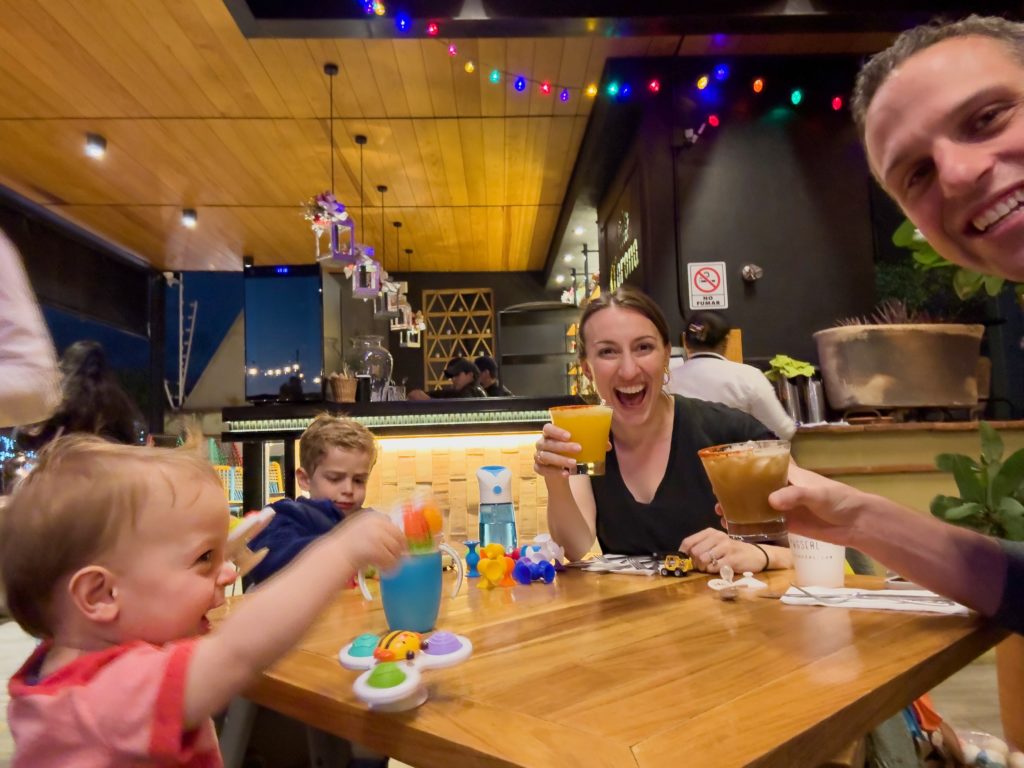By Christmas Day, Shiloh had adjusted to the time zone, so at 6:30am, Andrew and Shiloh hit the empty streets to allow Emerson to sleep. They wandered for three hours before Emerson emerged, recharged, and ready for the day.
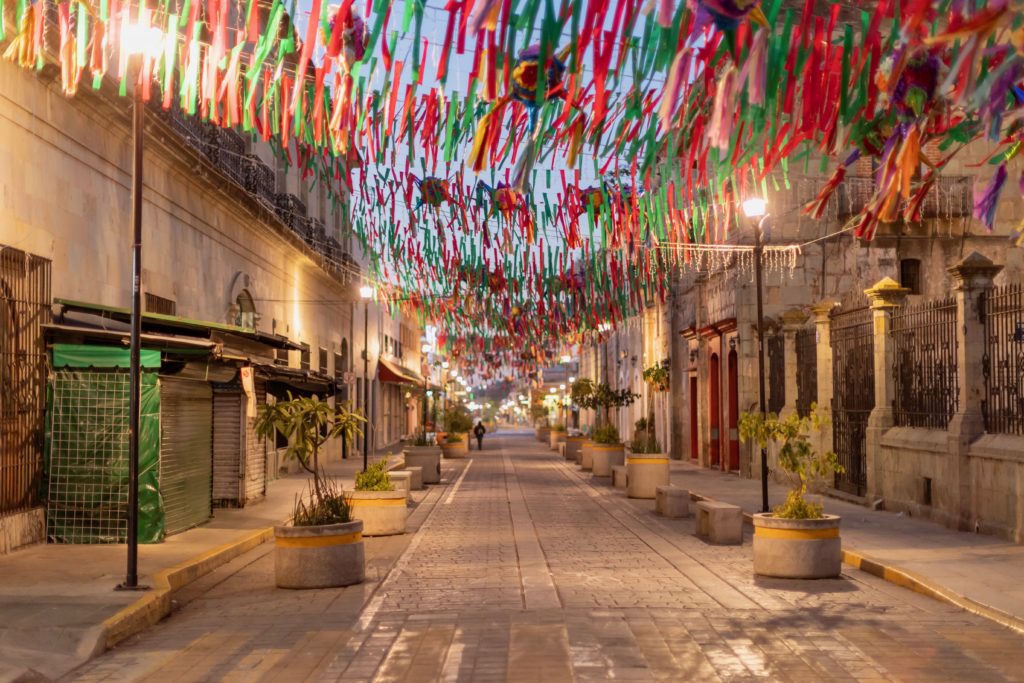

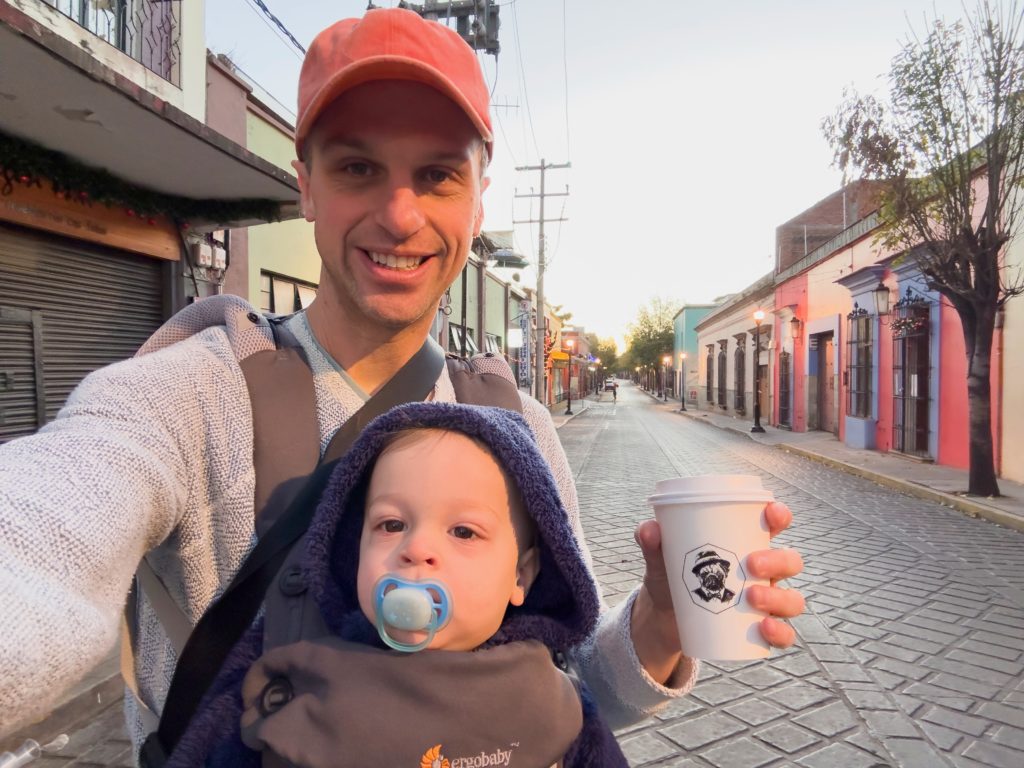


Coco picked us up from our hotel and kindly insisted we go first to his favorite spot to learn how textiles are made. Emerson was so attentive as the artisan explained their process. First, they gather the animal furs, then washing them with a natural soap, brush, spin, dye and weave. It’s simple enough to explain, and remarkable to see done. The artisan showed us how to find colors from the most unexpected places, like using pomegranate seeds to create green dye and the dried and crushed fungus that grows off a cactus to make purple.




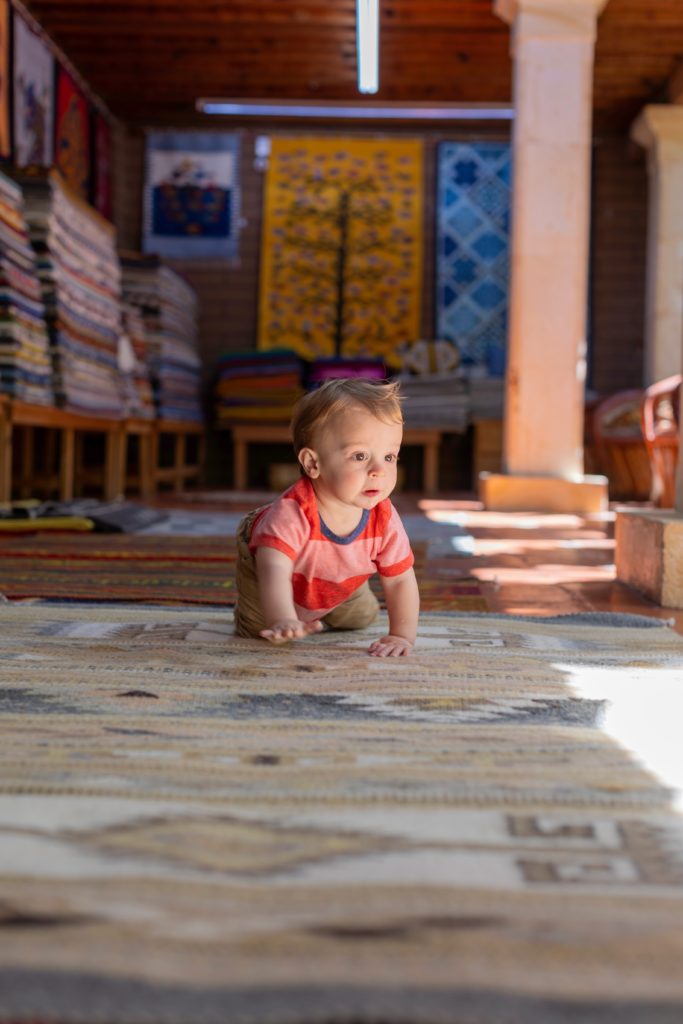
By mid-day it was back to our regularly scheduled program: a mezcal tasting. Mezcal is made from agave plants that, depending on the type, can take between 7-15 years to grow. Some agave plants can be farmed, while others are more similar to truffles and can only be cultivated in the wild. In a wildly simplified explanation, the leaves are cut from the agave leaving a huge, heavy pineapple-like plant that is cooked beneath the ground in a fire for 7-10 days, then crushed by a giant rock pulled by a mule, then double distilled (single distillation could cause blindness), then, ta-da! Mezcal! Emerson was given a juice tasting to match our collection of mezcals. Andrew learned about the different mezcal varietals, and I learned that I really only like mezcal in cocktail form. In Oaxaca, mezcal is consumed daily because “Mezcal doesn’t make you drunk. It makes you magic.”

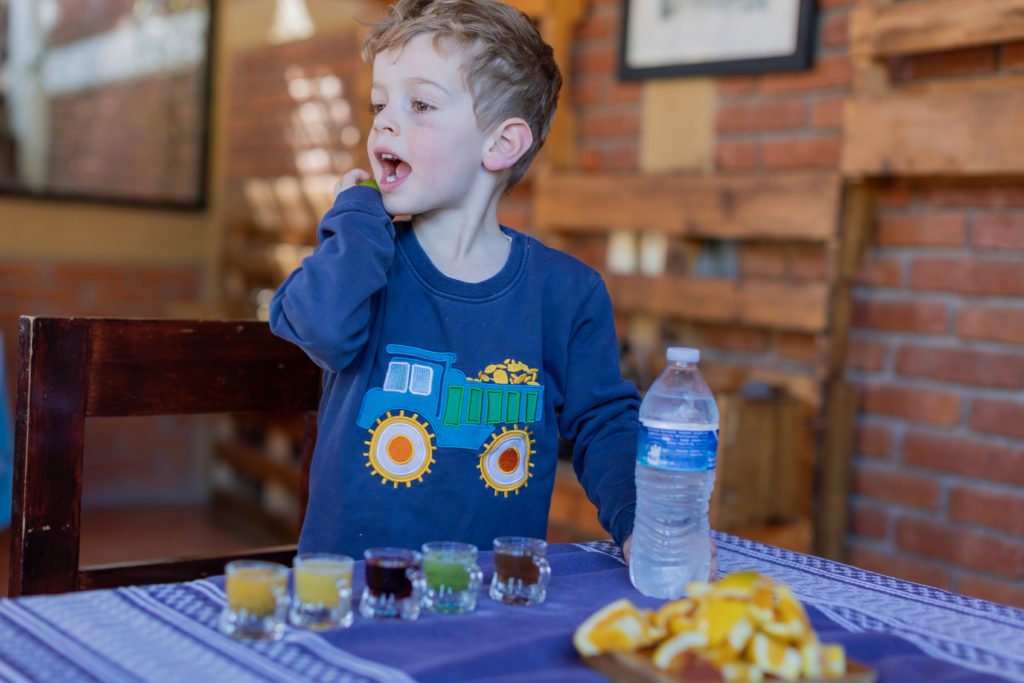
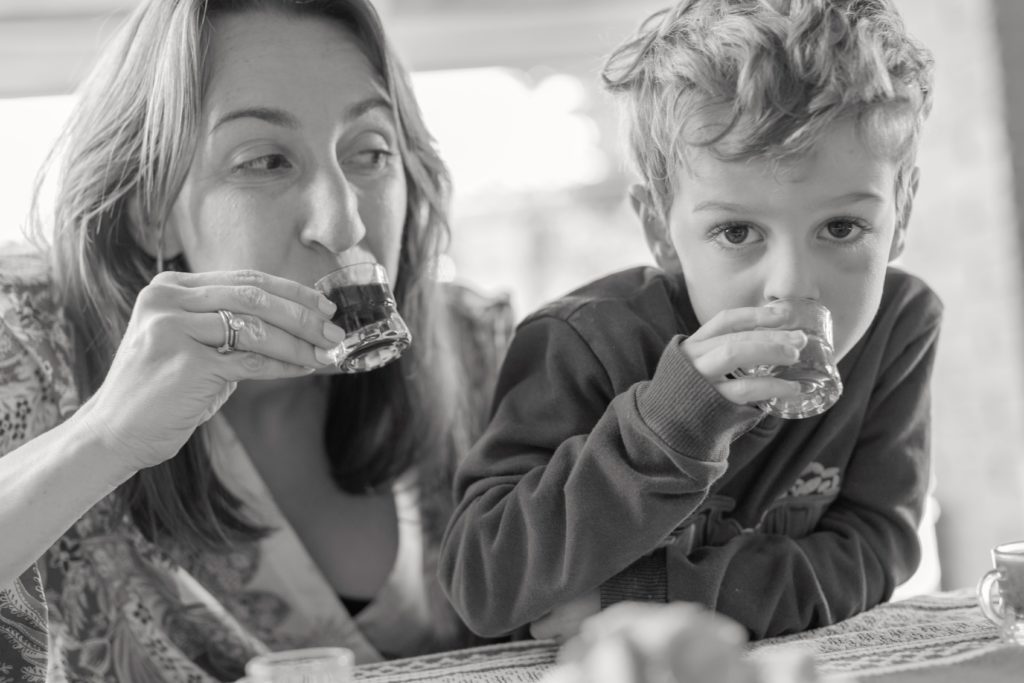
On our way back to the hotel we stopped to see the widest tree in the world and the small town that prides itself on their tree.
At dinner that night, Emerson ate his pasta by the handful, explaining to Shiloh that he’d ordered his own food. Shiloh consumed his weight in octopus, and we all went to bed happy.
